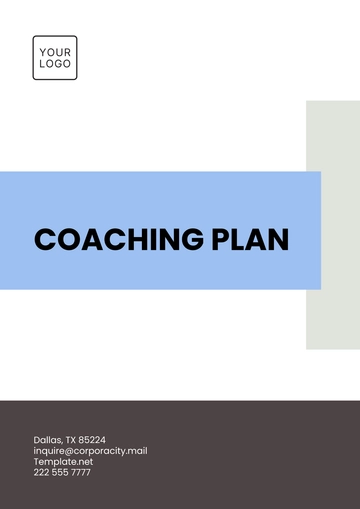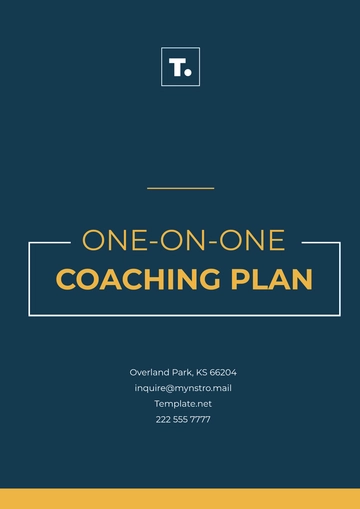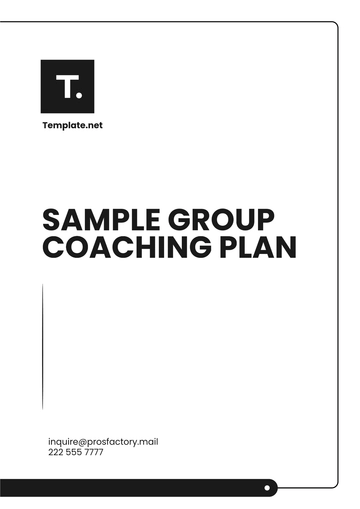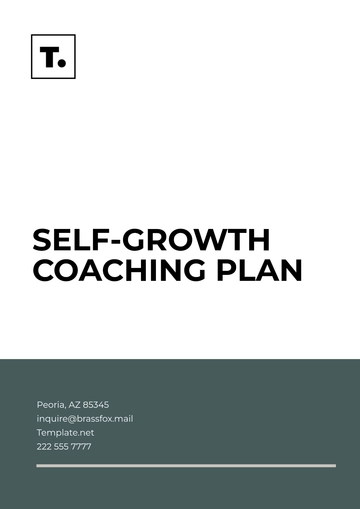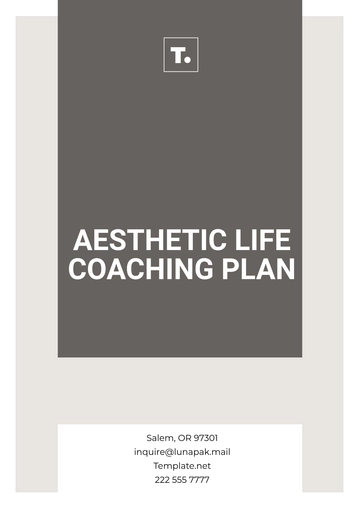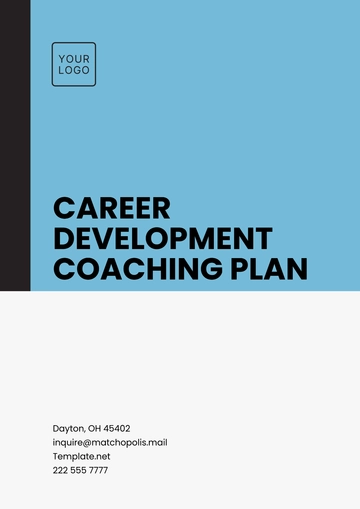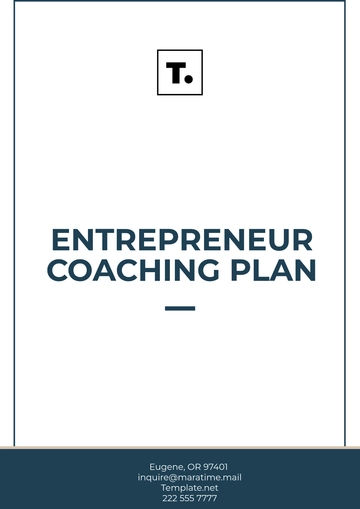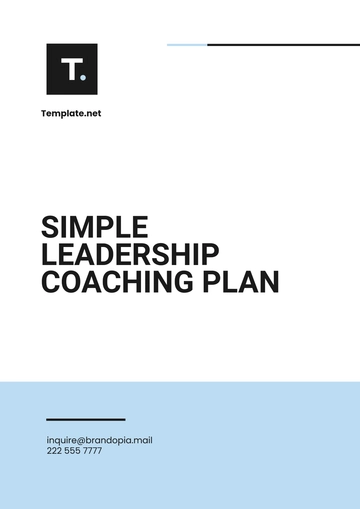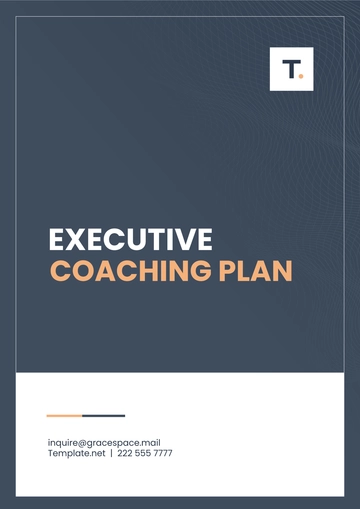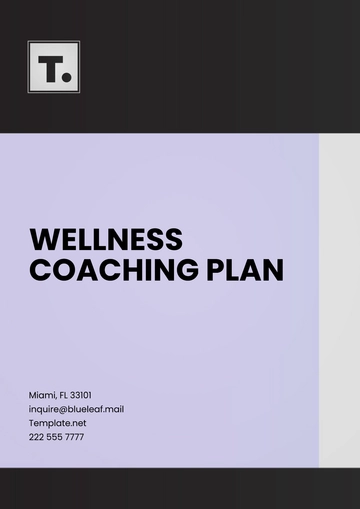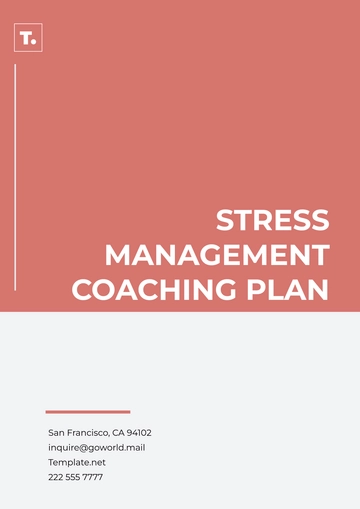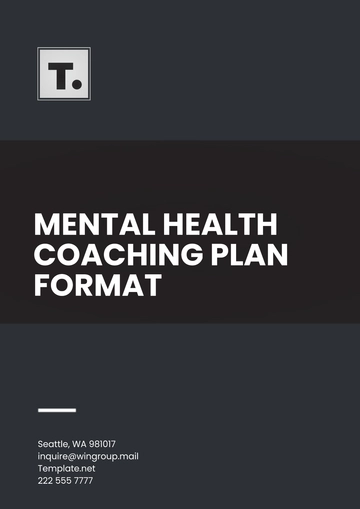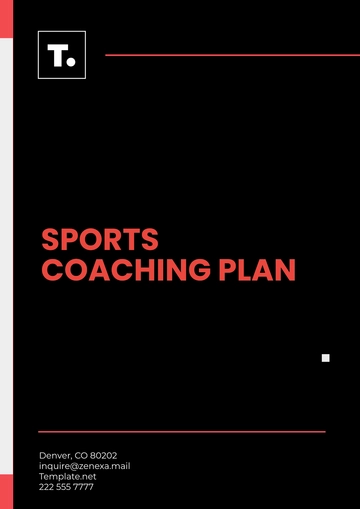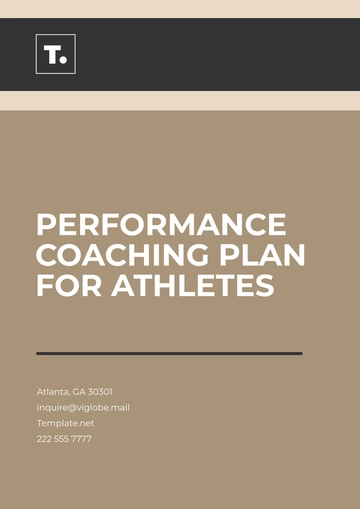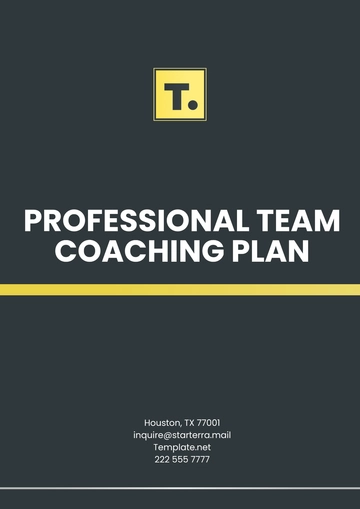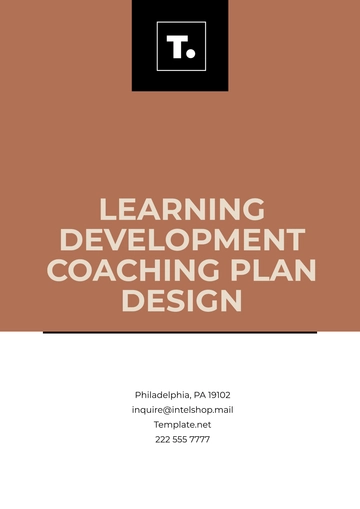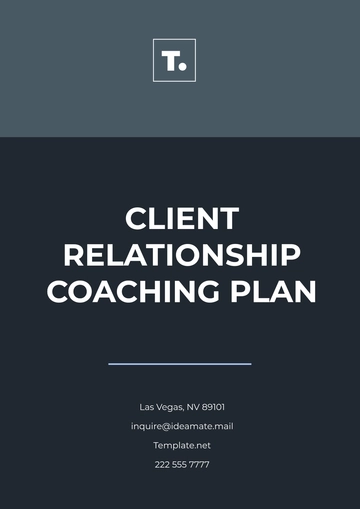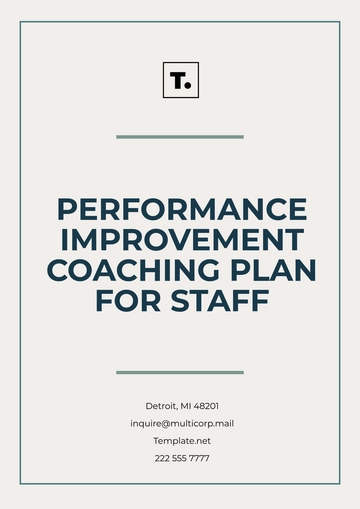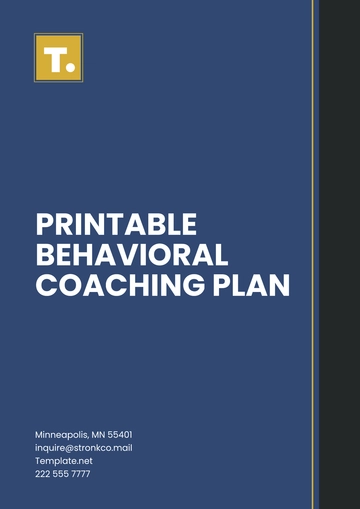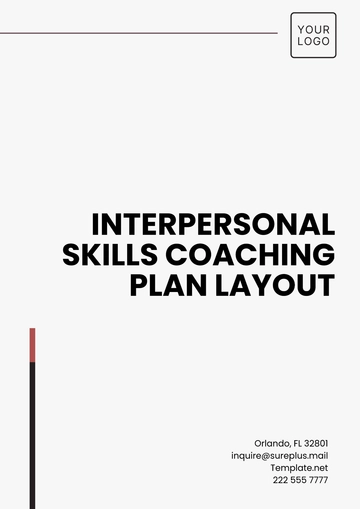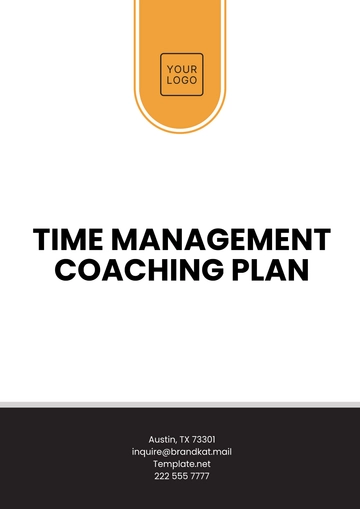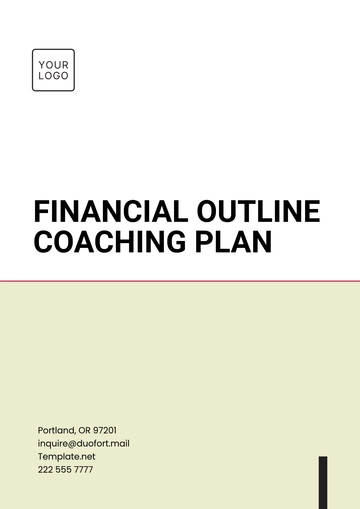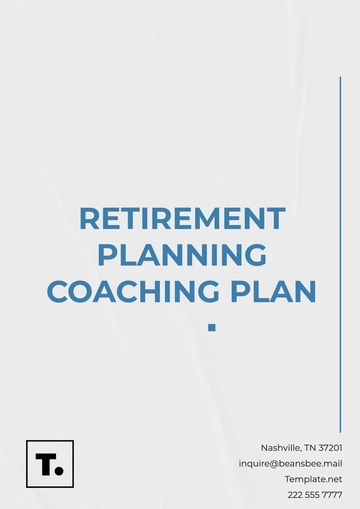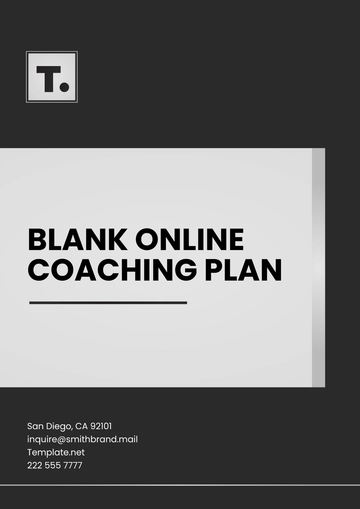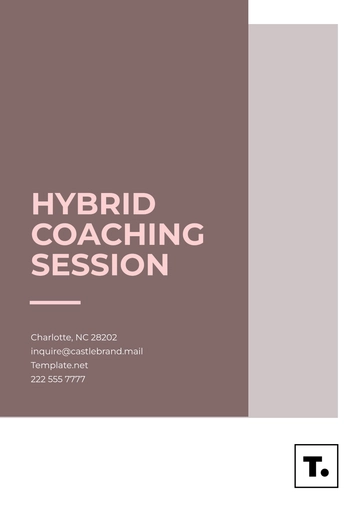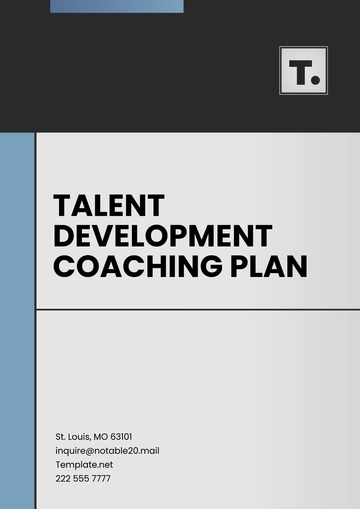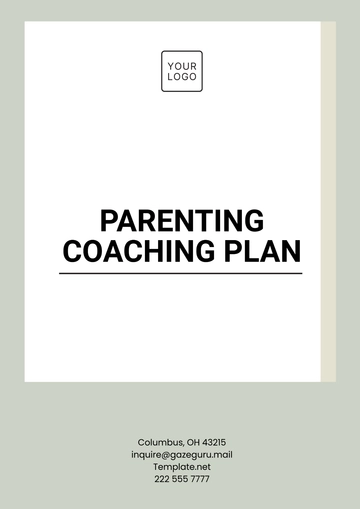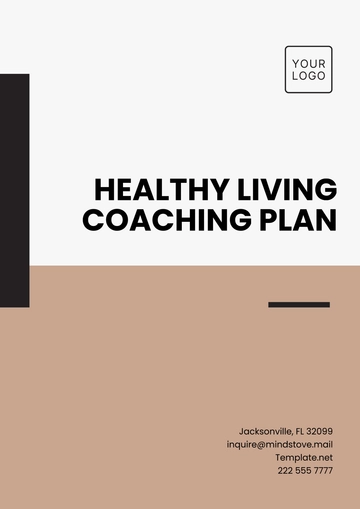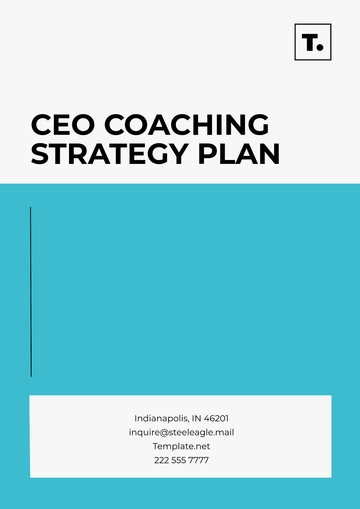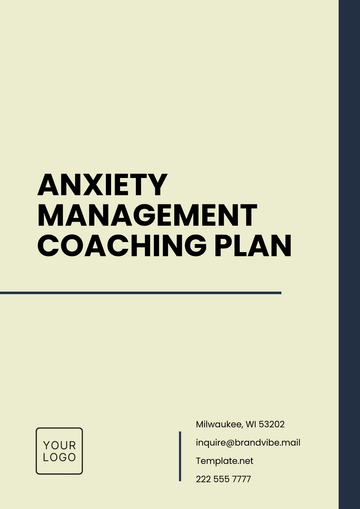Free Coaching Intake Session Plan
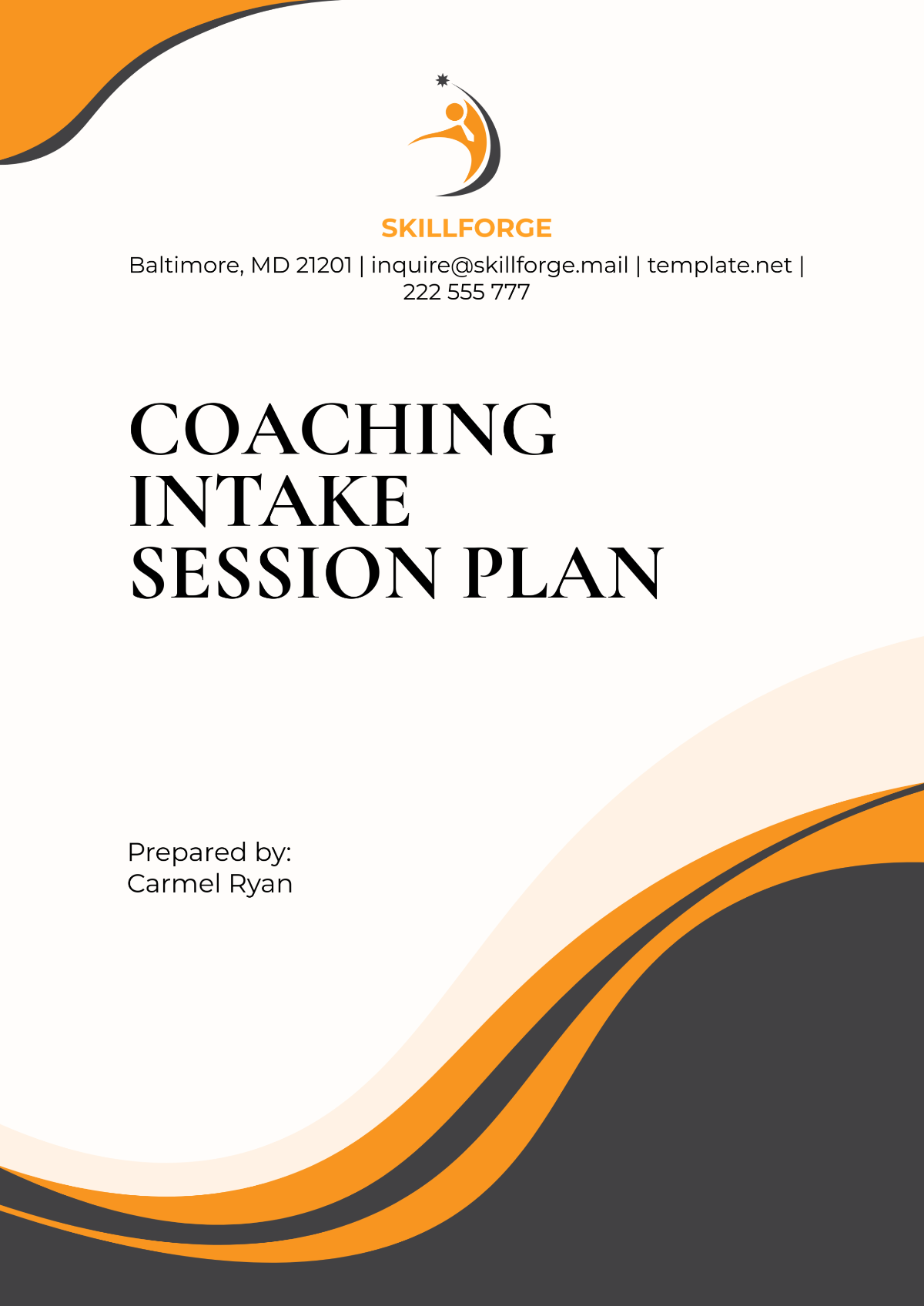
I. Introduction and Rapport Building
A. Welcome and Introduction
Welcome to your first coaching session with [Your Company Name]. My name is [Your Name], and I bring over 12 years of experience in coaching individuals and teams to achieve meaningful change. Throughout our time together, we will work closely to unlock your potential, overcome challenges, and reach your personal and professional goals.
B. Establishing Trust and Safety
A successful coaching partnership is built on mutual trust and understanding. I want to assure you that everything we discuss in these sessions will remain confidential and that I am fully committed to supporting your growth. Please know that your honesty and openness are highly valued, and I will respect your pace and boundaries throughout our time together.
C. Setting the Tone for the Session
To begin, I want to establish an open, relaxed atmosphere where we can have candid conversations without pressure. It’s important that you feel comfortable expressing any thoughts, emotions, or concerns you may have during our coaching engagement. We’ll take time to connect on a personal level, ensuring that you feel confident and at ease with the coaching process moving forward.
II. Client Background Information
A. Personal History
Understanding your personal history helps me understand the context in which you approach challenges and opportunities. Please share any key life experiences that have shaped your values and approach to decision-making. Whether it's relationships, past achievements, or turning points, these experiences will help us understand how they might influence your goals today.
B. Professional Background
Tell me about your current role and your journey to get there, including major milestones, promotions, or transitions. Understanding your professional story, along with the challenges and accomplishments that have shaped your career, will provide insight into where we can focus our coaching efforts. We’ll also identify any gaps between your current role and the career trajectory you envision for the future.
C. Health and Wellness (if relevant)
Personal well-being is crucial to achieving long-term success. How do you currently manage stress, health, and wellness in your life? We’ll explore how maintaining balance between work, health, and personal life might influence your productivity and happiness, helping you thrive holistically in all areas of life.
III. Exploring Client’s Current Situation
A. Assessing Current State
Let’s take a deep dive into where you currently stand—both personally and professionally. What are the key issues or challenges that feel the most pressing for you right now? By identifying and addressing these concerns, we can tailor our coaching sessions to provide immediate support where you need it most, while setting the stage for broader progress.
B. Identifying Goals and Aspirations
We will work together to clarify and prioritize your short-term and long-term goals. These goals could include personal growth, career advancement, skill development, or work-life balance. Understanding your aspirations will allow us to create a roadmap, with measurable milestones, that guides our coaching efforts toward tangible outcomes.
C. Recognizing Strengths and Resources
You already possess a wealth of strengths that will aid you in overcoming obstacles and achieving your goals. Reflecting on past successes, both big and small, will help identify resources that can be leveraged in our work. This self-awareness will serve as a foundation upon which we can build, ensuring that we recognize and utilize your strengths effectively throughout our coaching journey.
IV. Defining Coaching Expectations and Agreements
A. Discussing the Coaching Relationship
The coaching relationship will be a collaborative process. I will be your guide, but you will be the expert on your life and goals. Together, we will build a partnership based on mutual respect, where you are empowered to make decisions and take action that aligns with your values and vision for the future.
B. Setting Boundaries and Confidentiality
Our work will be conducted in a safe and confidential space, where your thoughts, feelings, and experiences are respected. I will not share anything we discuss with anyone, unless you choose to share that information. We will also discuss any specific boundaries that are important to you, ensuring that the coaching process respects your personal preferences and comfort levels.
C. Establishing Logistics
We will meet every two weeks for a 60-minute virtual session, with the flexibility to adjust as needed. If you ever feel that more frequent sessions are necessary or that our time together needs to be adjusted, feel free to let me know. We will schedule sessions at a time that is convenient for you, while ensuring consistent progress toward your goals.
V. Coaching Methodology and Process Overview
A. Explaining the Coaching Approach
My coaching methodology combines strengths-based coaching, solution-focused techniques, and mindfulness practices. This approach encourages you to tap into your existing strengths and resources, while also helping you identify and overcome obstacles that may arise. Through this balance, we will build a foundation for sustainable growth and positive change.
B. Outlining the Structure of Future Sessions
Each session will typically follow a consistent structure: we will begin by reviewing any progress or challenges you’ve encountered, followed by a deep dive into a specific area of focus. We’ll then collaboratively set goals for the next phase and agree on action steps that will keep you moving forward. The structure will remain flexible, allowing us to adjust based on your needs and the areas you wish to explore.
C. Setting a Timeline for Coaching
This coaching engagement will begin with an initial 6-month commitment, with the option to extend based on your progress and needs. We’ll periodically assess your development and reflect on the effectiveness of our sessions. This timeline ensures focused work on your key goals while maintaining the flexibility to adjust the process as needed.
VI. Assessment and Exploration
A. Initial Self-Assessment (if applicable)
Before our next session, you will complete a self-assessment questionnaire designed to provide insights into your strengths, areas for improvement, and overall life satisfaction. This will give us a baseline from which we can track your progress over time. We will discuss the results in our next meeting and use them to guide our coaching process.
B. Exploring Obstacles and Limiting Beliefs
As we work together, we’ll identify any limiting beliefs or fears that may be holding you back from fully stepping into your potential. These beliefs can often remain unconscious, but by exploring them, we can begin to shift your mindset. Recognizing and reframing these beliefs will empower you to take bold, confident steps toward your goals.
C. Understanding the Client’s Ideal Future State
Let’s imagine where you want to be one year from now. How does your career look? What does your work-life balance feel like? This exercise will help clarify the vision of success that will guide our sessions and help ensure that every decision and action we take is aligned with your ideal future state.
VII. Setting Goals for the Coaching Engagement
A. Defining Key Focus Areas
Together, we will select three key areas of focus for the upcoming months, which could range from leadership skills to personal productivity. Each area will be aligned with your overall goals and will help us build momentum in achieving them. These focus areas will provide a sense of direction, ensuring that our work together is targeted and effective.
B. Setting SMART Goals (Specific, Measurable, Achievable, Relevant, Time-bound)
Each goal we set will follow the SMART criteria, ensuring they are clear, measurable, and achievable within a realistic timeframe. For instance, if you want to advance in your career, a SMART goal might be, “Secure a promotion to senior manager within 6 months by improving leadership skills and completing a professional certification.” This clarity will help you stay focused and motivated.
C. Establishing Metrics for Success
Success is not just about achieving goals—it’s also about making measurable progress along the way. For example, we might track progress through monthly reflections or by achieving specific milestones, like completing a major project or receiving positive feedback from colleagues. These metrics will help us gauge whether our coaching approach is working and whether adjustments are needed.
VIII. Action Plan and Next Steps
A. Immediate Action Steps
For the next two weeks, please focus on completing your self-assessment and identifying any immediate barriers to your success. Additionally, I encourage you to reflect on the three most important goals you want to achieve by the end of our coaching engagement. These initial steps will help set the tone for our future work together and provide a clear starting point.
B. Scheduling Follow-Up Sessions
Our next session is scheduled for [insert date], where we will review your self-assessment results and establish a clearer picture of your goals. I will send a calendar invitation to confirm this date and time. If for any reason you need to reschedule, please let me know as early as possible.
C. Client’s Reflection on the Intake Session
As we wrap up today’s session, I’d love to hear your feedback. How did this session feel to you? Do you feel that we’ve covered everything important, or is there anything you would like to add or adjust as we move forward?
IX. Feedback and Closing the Session
A. Reflecting on the Session
I believe today was a fantastic start to our coaching journey together. We’ve identified key focus areas and set the stage for a productive and transformative engagement. I look forward to helping you work toward your goals and supporting you every step of the way.
B. Gathering Client Feedback
Before we conclude, I would love to know how you felt about today’s session. Was the pace comfortable for you? Were there any aspects that stood out as particularly helpful, or areas where you feel more clarity is needed?
C. Expressing Gratitude
Thank you for your openness and trust in today’s session. I am excited to work with you on achieving your goals and navigating the challenges ahead. Let’s make this journey one of growth, discovery, and lasting impact.
- 100% Customizable, free editor
- Access 1 Million+ Templates, photo’s & graphics
- Download or share as a template
- Click and replace photos, graphics, text, backgrounds
- Resize, crop, AI write & more
- Access advanced editor
Efficiently streamline your coaching process with the Coaching Intake Session Plan Template from Template.net. This editable and customizable tool allows you to tailor each session to your client’s needs, ensuring a personalized experience. With the intuitive AI Editor Tool, creating and adjusting your coaching plans has never been easier, saving you time and enhancing client satisfaction.
You may also like
- Finance Plan
- Construction Plan
- Sales Plan
- Development Plan
- Career Plan
- Budget Plan
- HR Plan
- Education Plan
- Transition Plan
- Work Plan
- Training Plan
- Communication Plan
- Operation Plan
- Health And Safety Plan
- Strategy Plan
- Professional Development Plan
- Advertising Plan
- Risk Management Plan
- Restaurant Plan
- School Plan
- Nursing Home Patient Care Plan
- Nursing Care Plan
- Plan Event
- Startup Plan
- Social Media Plan
- Staffing Plan
- Annual Plan
- Content Plan
- Payment Plan
- Implementation Plan
- Hotel Plan
- Workout Plan
- Accounting Plan
- Campaign Plan
- Essay Plan
- 30 60 90 Day Plan
- Research Plan
- Recruitment Plan
- 90 Day Plan
- Quarterly Plan
- Emergency Plan
- 5 Year Plan
- Gym Plan
- Personal Plan
- IT and Software Plan
- Treatment Plan
- Real Estate Plan
- Law Firm Plan
- Healthcare Plan
- Improvement Plan
- Media Plan
- 5 Year Business Plan
- Learning Plan
- Marketing Campaign Plan
- Travel Agency Plan
- Cleaning Services Plan
- Interior Design Plan
- Performance Plan
- PR Plan
- Birth Plan
- Life Plan
- SEO Plan
- Disaster Recovery Plan
- Continuity Plan
- Launch Plan
- Legal Plan
- Behavior Plan
- Performance Improvement Plan
- Salon Plan
- Security Plan
- Security Management Plan
- Employee Development Plan
- Quality Plan
- Service Improvement Plan
- Growth Plan
- Incident Response Plan
- Basketball Plan
- Emergency Action Plan
- Product Launch Plan
- Spa Plan
- Employee Training Plan
- Data Analysis Plan
- Employee Action Plan
- Territory Plan
- Audit Plan
- Classroom Plan
- Activity Plan
- Parenting Plan
- Care Plan
- Project Execution Plan
- Exercise Plan
- Internship Plan
- Software Development Plan
- Continuous Improvement Plan
- Leave Plan
- 90 Day Sales Plan
- Advertising Agency Plan
- Employee Transition Plan
- Smart Action Plan
- Workplace Safety Plan
- Behavior Change Plan
- Contingency Plan
- Continuity of Operations Plan
- Health Plan
- Quality Control Plan
- Self Plan
- Sports Development Plan
- Change Management Plan
- Ecommerce Plan
- Personal Financial Plan
- Process Improvement Plan
- 30-60-90 Day Sales Plan
- Crisis Management Plan
- Engagement Plan
- Execution Plan
- Pandemic Plan
- Quality Assurance Plan
- Service Continuity Plan
- Agile Project Plan
- Fundraising Plan
- Job Transition Plan
- Asset Maintenance Plan
- Maintenance Plan
- Software Test Plan
- Staff Training and Development Plan
- 3 Year Plan
- Brand Activation Plan
- Release Plan
- Resource Plan
- Risk Mitigation Plan
- Teacher Plan
- 30 60 90 Day Plan for New Manager
- Food Safety Plan
- Food Truck Plan
- Hiring Plan
- Quality Management Plan
- Wellness Plan
- Behavior Intervention Plan
- Bonus Plan
- Investment Plan
- Maternity Leave Plan
- Pandemic Response Plan
- Succession Planning
- Coaching Plan
- Configuration Management Plan
- Remote Work Plan
- Self Care Plan
- Teaching Plan
- 100-Day Plan
- HACCP Plan
- Student Plan
- Sustainability Plan
- 30 60 90 Day Plan for Interview
- Access Plan
- Site Specific Safety Plan
